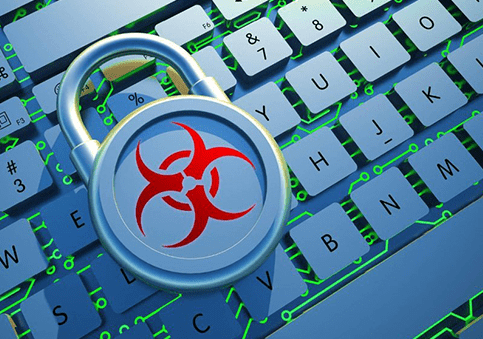
Anti-malware is a type of software developed to scan, identify and eliminate malware, also known as malicious software, from an infected system or network.
Antimalware secures an individual system or an entire business network from malicious infections that can be caused by a variety of malware that includes viruses, computer worms, ransomware, rootkits, spyware, keylogger, etc. Antimalware can be deployed on individual PCs, a gateway server or even on a dedicated network appliance. An effective antimalware tool includes multiple facets like anti-spyware and phishing tools to ensure complete protection.
How Does Anti-Malware Work?
Definitions
Many antimalware-programs are designed to scan for malicious software in a computing device by using a set of archived malware signatures (blacklist). The anti-malware program compares the identified suspicious file to the blacklisted malware definition and if the functions are the same, it flags it as malware. This is one method that most traditional anti-malware programs follow. It is effective to identify known malware, however, the database has to be updated to ensure protection from the newest malware and threats.
Heuristics
Heuristics is another method that is implemented in most of the anti-malware software to identify threats, unlike the definition-based method. Heuristics detects if the suspicious file is malware by running through a process of behavioral analysis. For instance, if a file or program is coded to delete important and sensitive system files, the antimalware flags it as malware. However, the heuristic method fails as it may result in false positives or sometimes even the legitimate programs are flagged malware.
Do You Need Protection Against Malware?
Xcitium Advanced Endpoint Protection (Xcitium AEP), Get complete protection for every endpoint on your network.
→ Free Trial for 30 days
→ 7-Layers Enpoint Security Platform
→ Default Deny Security
→ Cloud-based Advanced Malware Analysis
Sandboxing
There is another method called sandboxing, that can identify if the file or program is malware. If the file or program is deemed suspicious, it is moved to an isolated environment called the sandbox which is a secure space, where the file is run and executed to conclude whether its malware. If the file shows malicious behavior, the antimalware software will eliminate it. this is done without affecting the user experience and the normal operations of the computer. Through this method, antimalware can protect the system from both known and unknown threats.
Removal
Anti-malware not only identifies malware, but it also removes the identified malware.
Benefits Of Anti-Malware
- Real-time protection
- Boot-time scan
- Scanning of individual files
- Protection of sensitive information
- Restoration of corrupted data
- Protection from spam and identity theft
- Provides robust web protection
- Provides quick scan of the removable device
- Terminates unwanted ads and spam website
- Improves the PC performance
Looking For Malware Virus Removal Help?
There are different types of malware that have been developed to attack and infect systems through different mechanisms. To get rid of malware – there should be an effective anti-malware program like Xcitium Cybersecurity’s anti-malware program that:
- instantly updates for the latest in anti-malware protection,
- terminates or blocks every untrusted or suspicious process running on an endpoint with a single click
- easily integrates with cloud scanners to provide real-time security verdicts for unknown programs
Apart from installing the best anti-malware software, it is also important to delete temporary files, stay disconnected to the internet and clean your PC, ensure that you have a strong password for all the logins and also check before you download or click on an attachment or link whether its genuine or authentic to deliver good endpoint protection, avoid system crashes and for better system performance.
See Also: